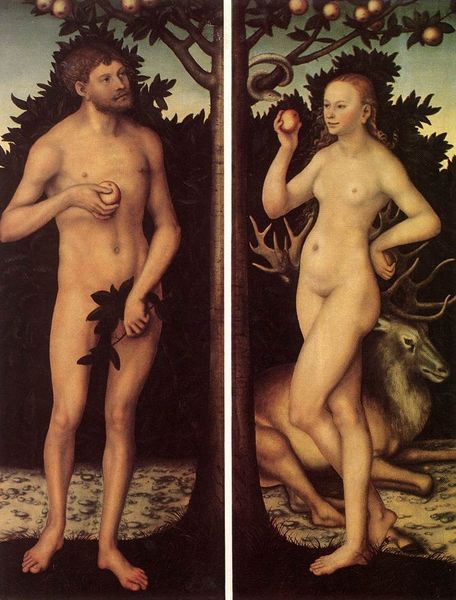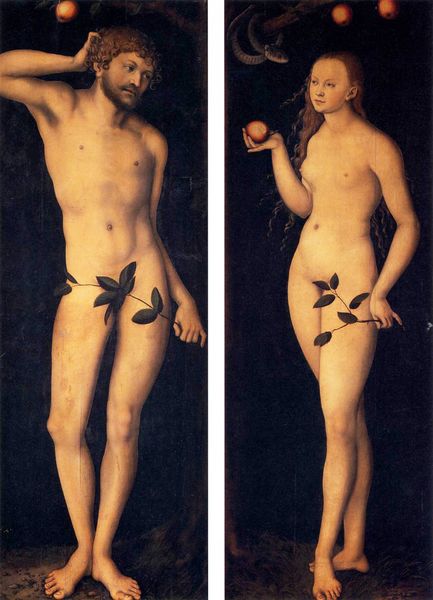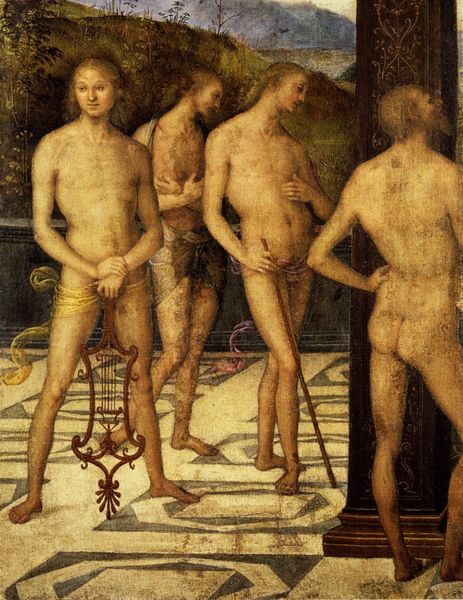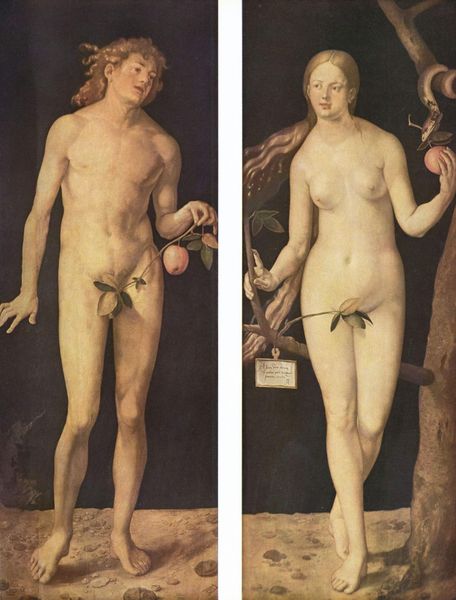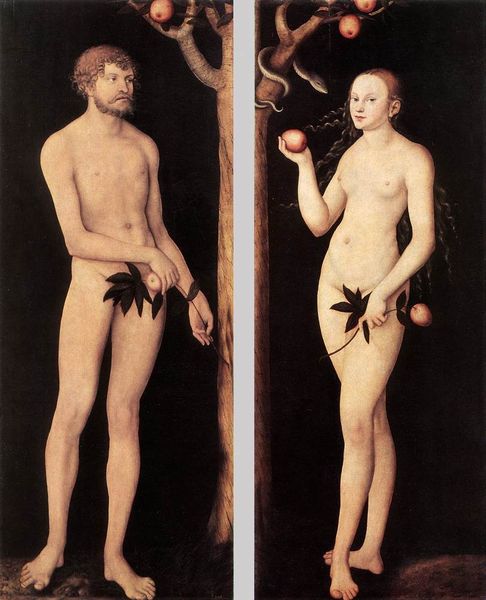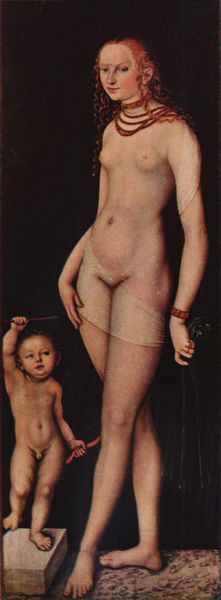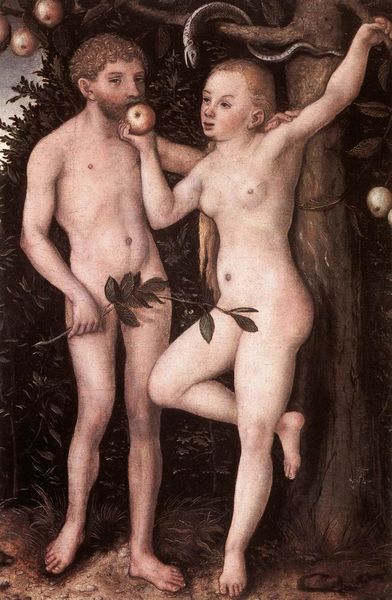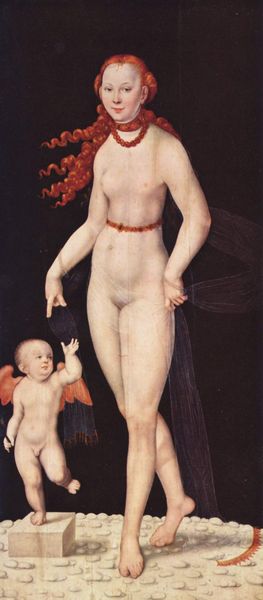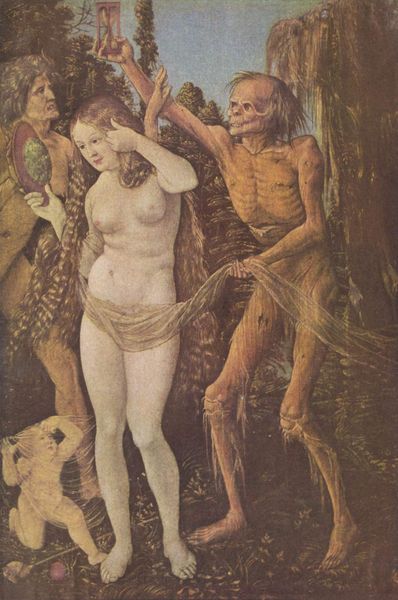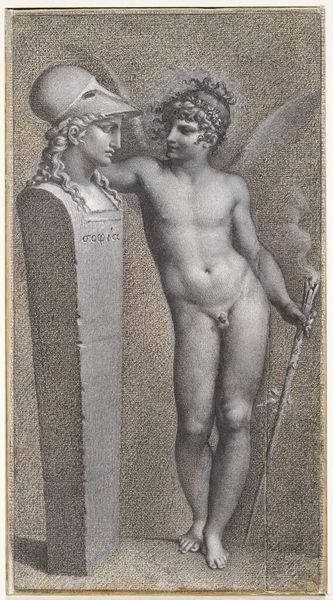
painting, oil-paint
#
painting
#
oil-paint
#
figuration
#
oil painting
#
christianity
#
history-painting
#
northern-renaissance
#
nude
Copyright: Public domain
Curator: This is Lucas Cranach the Elder’s "Adam and Eve," an oil painting from 1530 now residing at the Royal Museum of Fine Arts Antwerp. The depiction shows the pivotal moment of the Fall. Editor: My first impression is how self-consciously posed they are. Almost theatrical. And that stark black background... it amplifies the almost porcelain quality of their skin. Curator: Indeed. Cranach's Adam and Eve reflects the anxieties and societal shifts surrounding the Reformation. Note the serpent, bearing down on Eve; but is it a warning or temptation? Cranach was closely associated with Martin Luther, and this painting acts as a potent theological and political statement, underlining man’s free will. Editor: Look at how the light hits them. The painting is on panel; one imagines its process involved meticulously applied layers of paint, built up to create the near-translucent flesh. This feels less about divinity and more about the sheer, demanding labor and material investment required to portray humanity with such... manufactured innocence. What would such work mean to the non-elite in 16th-century Europe? Curator: Certainly, it represents a fascinating convergence of religious dogma and emerging humanist thought. Consider, though, how the imagery was consumed. Art in this period served to teach as much as delight; images of this subject served as both cautionary tales but also provided a visual touchstone for religious beliefs being hotly contested across Europe. The nudes were a return to classical art. Editor: Precisely. And yet, Cranach hasn't entirely abandoned the symbolic. Look at the apple, offered by Eve, while Adam hesitates, struck I think, with dread. I imagine there were layers of underpainting to produce these very naturalistic depictions. The whole painting then functions, in many ways, as an item of cultural exchange: pigment traded and shipped, a message painted in clear oil. Curator: It serves as an entry point into the complexities of art's role in both reinforcing and critiquing prevailing social norms. This work asks profound questions about individual freedom and the influence of the church in the face of earthly pleasures. Editor: Ultimately, one is drawn back to how this moment was painstakingly assembled: each layer, each glaze contributing to this narrative about free will and its tangible consequences.
Comments
No comments
Be the first to comment and join the conversation on the ultimate creative platform.
